Best Soil for Foundations – How to Know if Yours is Suitable
By Editorial Team
Updated on May 22, 2025

Clay, sandy, silty, till, and organic soils—foundation excavation conditions are particularly diverse in Quebec. However, clay soils cover most of the inhabited territory of the province. Therefore, there’s a high chance you’ll be digging your house’s foundations in clay. Here’s everything you need to know to build a solid foundation wall in this capricious soil.
How to recognize good soil for a foundation's excavation?
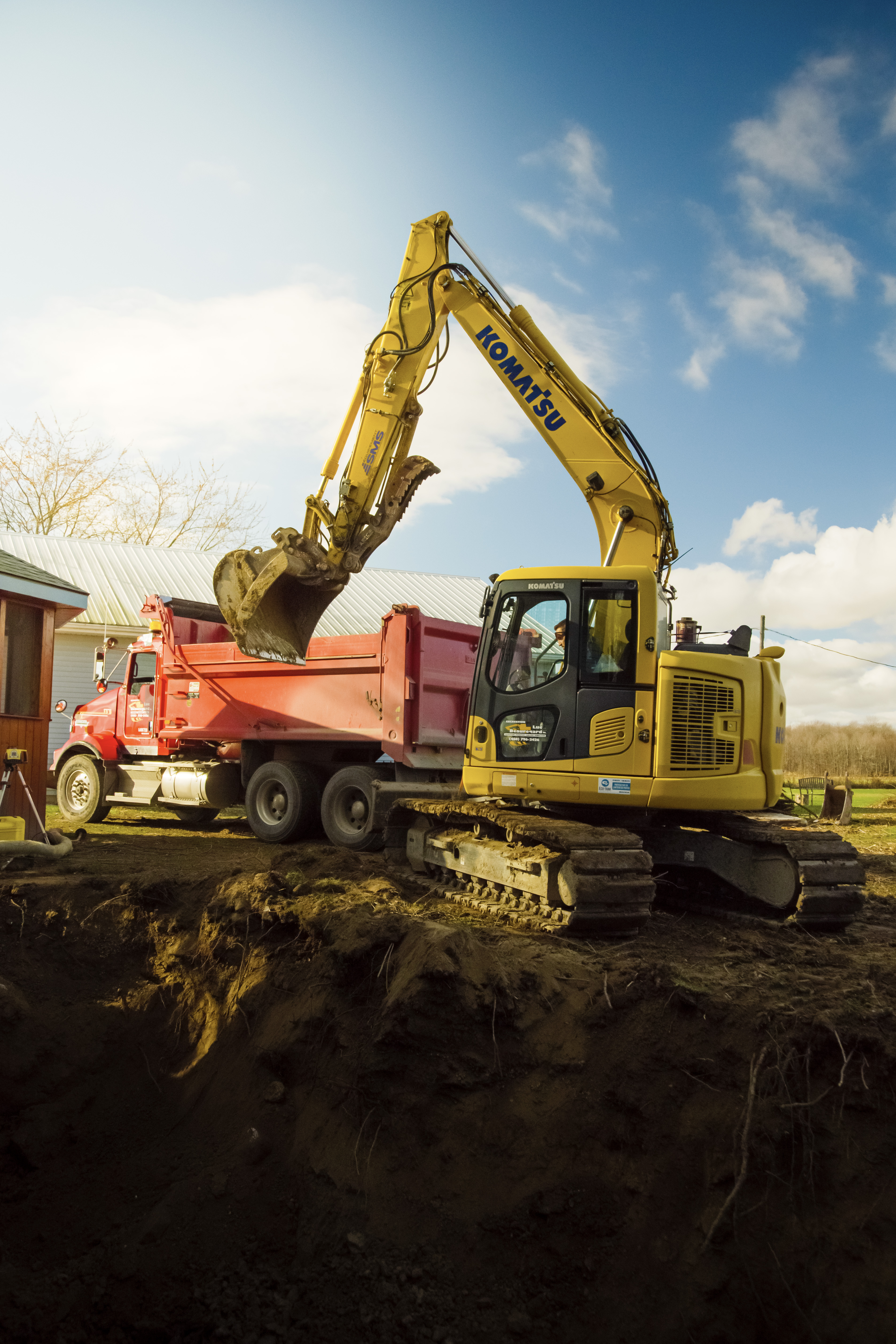
Source : RenoQuotes
One might say that, for excavation, good soil is stable soil. In reality, while some soil types are more stable than others, all present the same challenges: identifying the forces the soil imposes on a structure and implementing a method to contain them.
Thus, before undertaking an excavation, it’s advisable to consult an expert who will define these constraints. This analysis helps determine if the 10 conditions of good soil are met:
Good plasticity (the soil sticks and can be molded)
Particles smaller than 0.002 mm, with content more affected by ionic bonds than gravity
Ability to support vertical trench walls
Resistance evolving with vibrations and heavy equipment
Consistency varying between soft and hard soil
Does not easily allow water passage
Can be drained from within the excavation
Is cohesive, meaning it has a low erosion rate
Can withstand uplift from the excavation bottom
Cracks due to shear and settlement
Of course, the ideal soil rarely exists, especially in Quebec. As mentioned earlier, the inhabited areas of Quebec are clayey. In practice, this poses serious problems.
What foundation to create for clay soil?
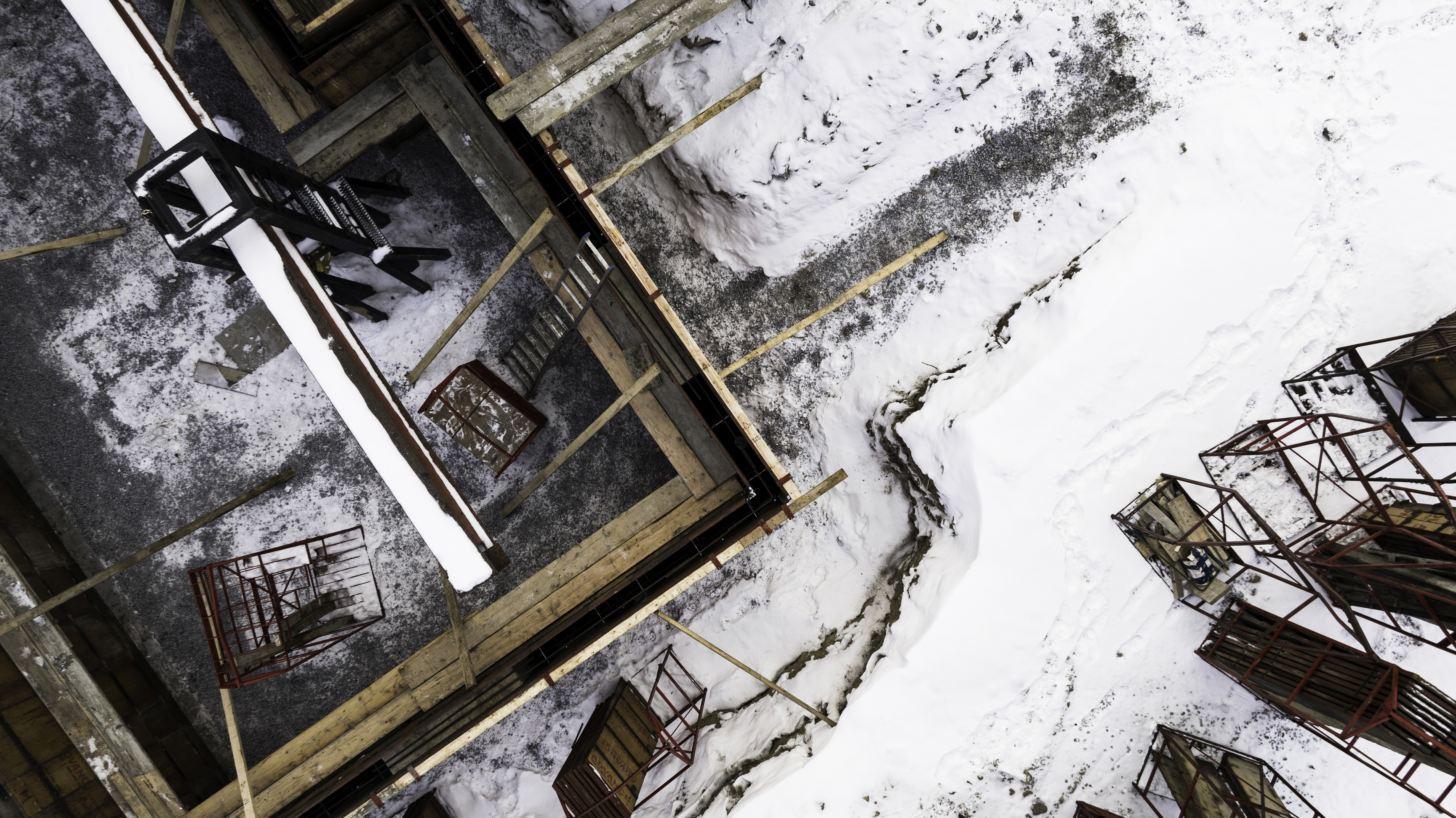
Source : DEMCO Canada
Look around you. You walk down the street and see that one house has a cracked facade, while the one next to it is intact. Yet, both are near large trees, built on the same clay soil, and subjected to the same traffic density.
The difference often comes down to one thing: the foundation wall. One has good foundations, the other does not. So, how deep should you go, and what should these foundations look like?
Basics for Building Solid Foundations
For clay soil, your foundation walls should:
Extend to a depth of at least 3 ft 11 in (1.2 m)
Rest on footings with a resistance of at least 10 MPa (megapascals)
Not backfill the excavations
Be insulated
Be dug away from a slope
Be surrounded by an anti-evaporation geomembrane around the house
Be at a distance from trees
We’ll revisit the issue of trees in the section on houses that crack, but note that the anti-evaporation geomembrane is precisely there to prevent trees from cracking the house. To do this, you should install it at a distance of 3 ft 28 in (1.5 m) from the foundation walls.
Regarding the slope, we’ll discuss this later in the article, but know that erosion, digging a pool, or backfilling can cause slope slippage and thus change the forces the foundations must combat.
If you don’t follow these tips, the weight of your house and the natural movements of clay shrinkage and swelling will deform the soil and crack your house. It’s now time to understand why.
At what depth should you dig to avoid freezing during a foundation?
It’s essential to distinguish between two situations:
The basement or crawl space is heated
The foundations do not adjoin any heated room
In the first case, and in clay soil, a depth of at least 3 ft 11 in (1.2 m) must be respected. With everything we’ve said about clay so far, you’ve surely understood the reason: it easily becomes waterlogged.
In the second case, if you live south of Lac-Saint-Jean, you will need to dig up to 5 ft (1.5 m) deep.
In any case, since clay is particularly sensitive to freezing, you must add rigid insulation and place it outside your foundation walls. This way, they won’t freeze.
Why is clay soil fragile?
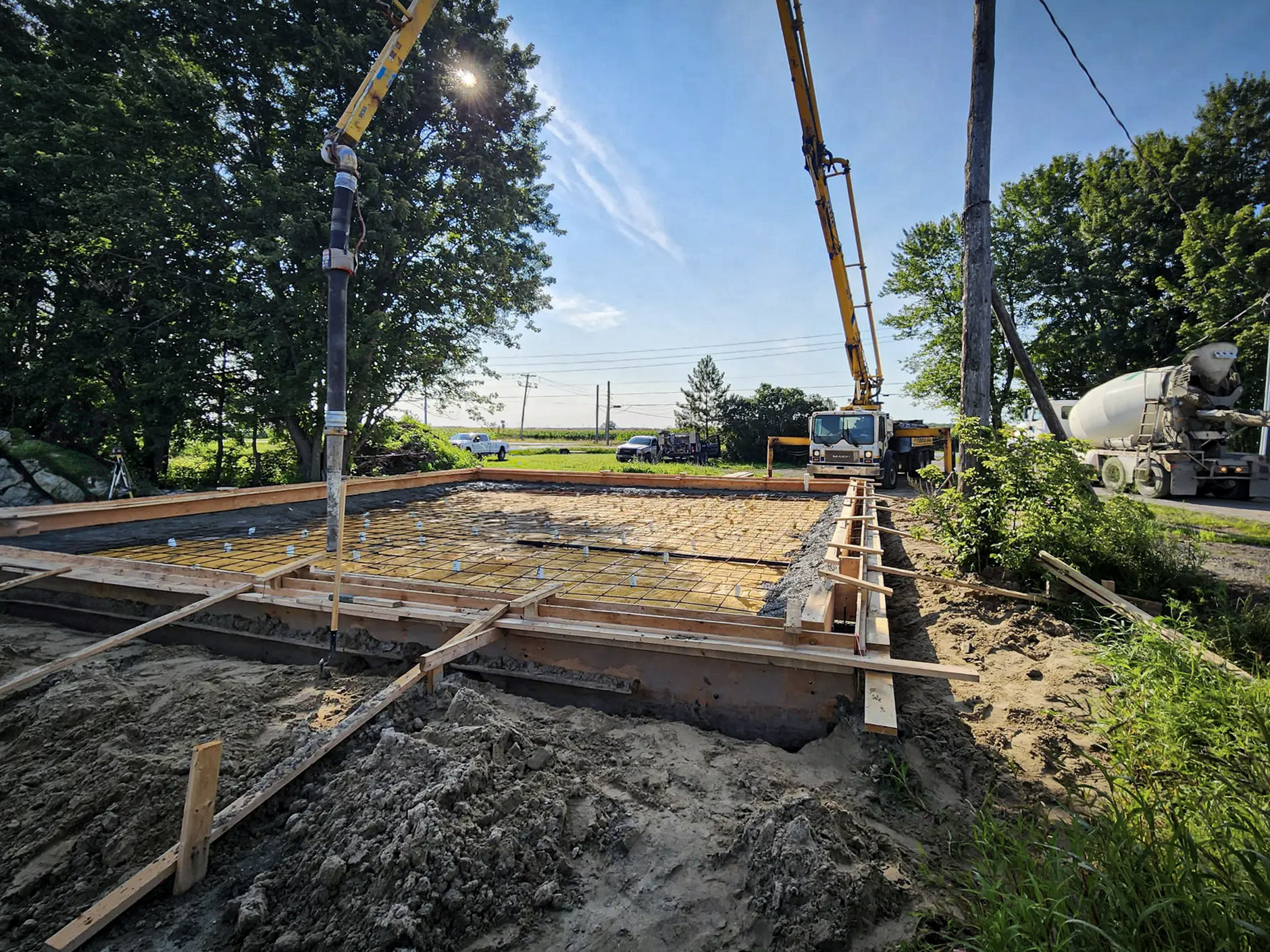
Source : Gestion Léonard et Fils Inc.
What is clay soil?
Clay soil is sedimentary in origin. It is mainly found around lakes and rivers. However, there isn’t just one type of clay soil. Not only do the properties of clay evolve and are thus directly related to its geological history, but its composition also differs from one soil to another.
Indeed, clay can be composed, in varying proportions, of minerals such as:
Kaolinite
Illite
Halloysite
Chlorite
Montmorillonite
To these elements are added cementing agents, like calcite, present in varying amounts. The more cementing agents there are, the more solid the clay is, and vice versa. Clays dating from the post-glacial period, like those in Quebec, are particularly young and thus poorly consolidated.
Problems Related to Clay Soil
Clay presents two problems, which become apparent:
During the excavation, we already observed the instability of the clay. It’s important to know that many landslides have occurred in the past. The cause? The leaching of salt left in the sediments of the Champlain Sea, and the incision created by the St. Lawrence River and its tributaries. This intrinsic fragility of clay also becomes evident when digging a home’s foundation wall. In fact, clay soil is made up of layers of silt and sand that can be affected by pore water pressure. When that pressure is released during excavation, it can cause instability in the loose soil layer.
During the Life of the Construction
A second problem arises once the house is built. It’s important to know that clay soil can be, geologically, more or less young. The younger the soil, the more precarious its balance. What does this mean? Clay will struggle to support its own weight. The weight of infrastructures built on this type of soil will thus cause deformations. The problems don’t stop there, as clay is particularly sensitive to water variations. When it’s hot and the clay dries out, it shrinks. This is called shrinkage. Conversely, when it rains and the ground becomes waterlogged again, it swells. This is called swelling.
These are the reasons why a house’s foundations must be able to handle all these constraints.
Why is my house cracking despite having good foundations?
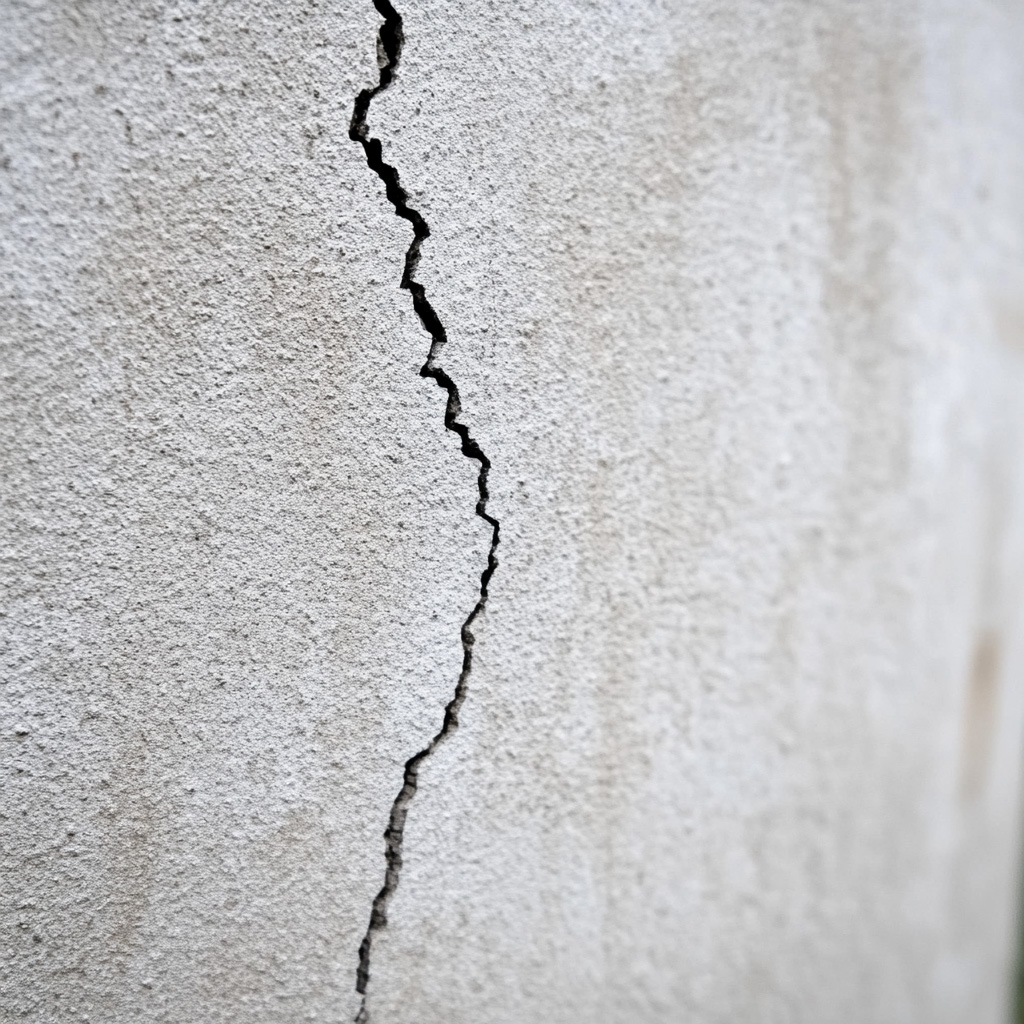
Source : RenoQuotes
Most likely because it was built on clay soil. If you’re confident your foundations are solid, the issue could be related to the presence of large trees near your home.
Large trees can cause two main problems. The first appears during periods of drought. Thirsty trees draw moisture from the ground, drying out the soil and causing nearby buildings to crack due to the clay shrinkage effect. This is why a geomembrane, which we’ve already discussed, is so important.
The second issue arises when the roots of large trees extend beneath the house. In this case, when strong winds shake the tree’s canopy and risk toppling it, the roots can lift the footing, damaging the structure above.
That said, large trees aren’t the only cause of cracks in your home. In cities like Montreal, where clay soils are common, other factors include:
The overuse of asphalt and concrete, which makes the soil impermeable
Drainage systems that prevent water from surrounding the foundation footings
Stormwater being directed straight into sewers rather than into the ground
If you're experiencing this kind of issue, a geotechnical engineer can recommend how to limit the damage. In some cases, simply watering your yard yourself can be enough to correct the problem.
Frequently Asked Questions (FAQ)
What are the best soils for foundations?
The best soil for a foundation is a stable, cohesive soil with low water permeability and high load-bearing capacity. In Quebec, soils are often clay-based, which can be tricky but manageable with proper foundation design. Ideal soils include well-compacted clay, till, or dense sand that resists shifting and erosion.
What makes a good soil for foundation work?
A good soil for foundation work should:
Stick together and be moldable (plasticity)
Support vertical trench walls
Resist water penetration
Remain stable under heavy machinery and vibrations
Be slow to erode and crack
Withstand freezing and thawing without significant movement
These properties help ensure that your foundation won’t shift, sink, or crack over time.
How do you build on sandy soil?
Building on sandy soil requires special considerations:
Compact the soil thoroughly before construction
Use wider or deeper footings to distribute weight
Add geotextiles or gravel to improve stability
Ensure proper drainage to prevent washouts
Consult a geotechnical expert for site-specific recommendations
While sandy soils drain well, they lack cohesion and can shift, so proper design is critical.
What is soil and foundation engineering?
Soil and foundation engineering is a branch of geotechnical engineering that studies soil behavior and how it interacts with building foundations. It includes:
Soil testing and classification
Load-bearing analysis
Foundation design (e.g., shallow, deep, piles)
Managing risks like soil movement, erosion, or groundwater impact
It ensures that structures are safe, stable, and durable.
What is the impact factor of Soils and Foundations?
Soils and Foundations is a peer-reviewed journal in geotechnical engineering. As of the latest data, its impact factor varies by year but typically ranges between 2.5 and 4.0. For the exact current impact factor, consult the publisher or indexing services like Clarivate or Scopus.
Why is soil important in foundation construction?
Soil is the very base upon which structures rest. Its properties affect:
How deep and wide a foundation must be
The type of foundation used (slab, crawlspace, piles, etc.)
Risks of settling, heaving, or shifting over time
How the structure withstands moisture, freeze-thaw cycles, and vibrations
Understanding the soil type ensures safe, cost-effective, and long-lasting construction.
Looking for something else?
Related articles
The latest industry news, interviews, technologies, and resources.

Editorial Team
•07 Nov 2023
When it comes to saving the environment, there are plenty of ways that you can contribute. Especially as a homeowner, you should consider the multitude of methods you can adopt to reduce your carbon footprint and create a healthier home and outdoor environment.
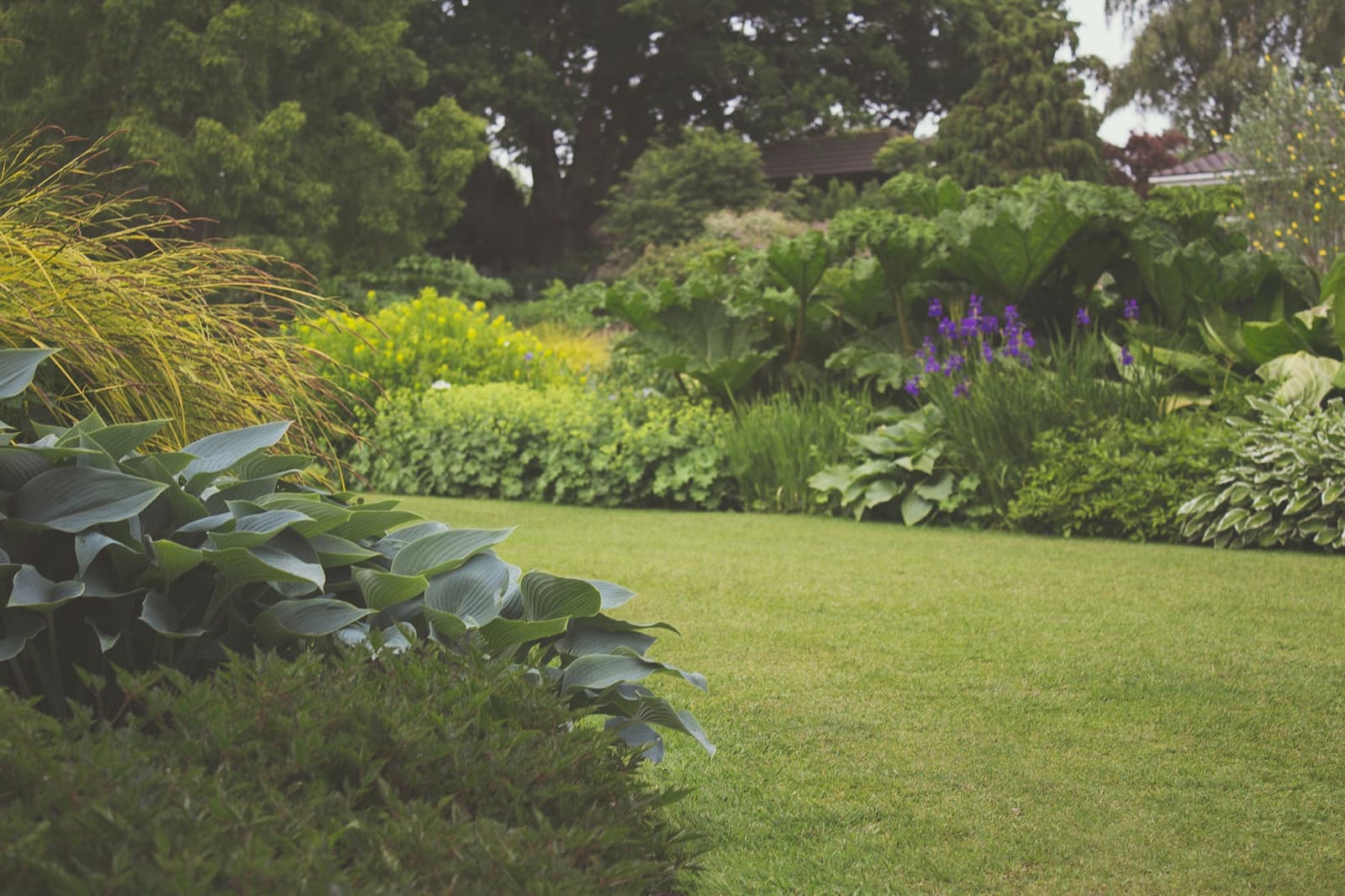
Editorial Team
•07 Nov 2023
Are you looking to make some changes to your landscaping? With such a multitude of trees and shrubs out there, this task may at first feel difficult to navigate! Luckily, we’ve got some ideas to inspire your landscaping project!
Editorial Team
•05 Jun 2025
Unless you've been living under a rock, you've certainly seen or heard about the impressive number of home renovation reality shows featured on television, both here and abroad.

Editorial Team
•29 Jan 2025
Making dinner consists of twists, turns, dips and bends, and as a result, designers, architects and homeowners alike are beginning to pay attention to the ergonomics of the kitchen. The science of ergonomics leads to the encouragement of productivity, efficiency as well as control. Using a combination of appliances and fixtures with ergonomic design alongside proper room layout and planning, cooking and working in your kitchen can become comfortable.

Editorial Team
•15 Aug 2025
Inflation significantly affects several economic sectors, and the renovation industry is no exception. Whether it be minor or major repairs or remodels, when the cost of materials, supplies, and services increases, it becomes much more difficult for homeowners to carry out renovation projects as intended.